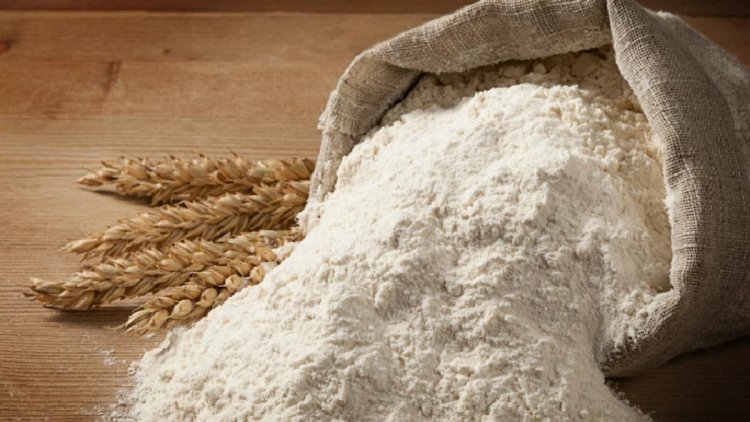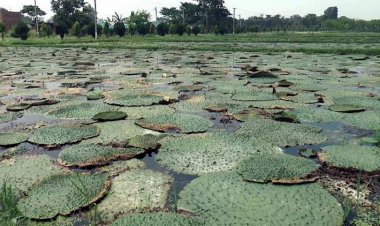Govt to check wheat, flour prices
The government is monitoring the prices of wheat and atta (flour) regularly and will soon take measures to control the rising rates. This comes against the backdrop of increasing retail prices of wheat and wheat flour.

The government is monitoring the prices of wheat and atta (flour) regularly and will soon take measures to control the rising rates.
This comes against the backdrop of increasing retail prices of wheat and wheat flour.
Food Secretary Sanjeev Chopra said that "all options are being explored" to bring down the prices.
"We are finding that there is an uptick in the prices of wheat and atta. We are aware of the issue. Various options are being explored by the government and very soon we will come up with our response," Chopra said.
The ministry would soon take some steps, Chopra said, but did not specify the measures.
His remarks assume significance in light of rising prices of atta that have touched Rs 38 per kg.
The secretary said that the stocks of wheat and rice in the Food Corporation of India (FCI) godowns are comfortable.
The Centre had banned wheat exports in May to control prices, after a slight fall in domestic production and a sharp decline in the FCI's procurement for the Central pool.
Last month, sources had said that the government was considering releasing 15-20 lakh tonnes of wheat from the FCI stock for bulk consumers like flour millers, under the Open Market Sale Scheme (OMSS), to contain rising retail prices.
Under the OMSS policy, the government allows state-run FCI to sell food grains, especially wheat and rice, at pre-determined prices in the open market from time to time to bulk consumers and private traders. The purpose is to boost the supply during the lean season and moderate the general open market prices.
Even the flour millers have demanded that the government offload wheat stocks from the FCI godowns to meet the shortage in the open market.
India's wheat production fell to 106.84 million tonnes in the 2021-22 crop year (July-June) from 109.59 million tonnes in the previous year due to heatwaves in a few wheat-growing states. The procurement also fell sharply to 19 million tonnes this year.
The area under coverage for the wheat crop in the current Rabi (winter-sown) season is higher. The procurement of new wheat crop would commence from April 2023.
Wheat acreage has increased marginally to 341.13 lakh hectares (ha) so far in the ongoing rabi season of the 2022-23 crop year, according to the agriculture ministry data.
The sowing of wheat, the main Rabi (winter) crop, had begun from October onwards. Maize, jowar, gram and mustard are other major Rabi crops. Harvesting of these crops will begin in March/April next year.
According to the latest data, the area under coverage for wheat has risen to 341.13 lakh ha till January 20 of the current Rabi season against 339.87 lakh ha during the same period last year.
The higher area has been reported mainly from Rajasthan (2.52 lakh ha), Bihar (1.49 lakh ha), Maharashtra (0.92 lakh ha), Chhattisgarh (0.54 lakh ha), Gujarat (0.48 lakh ha) and Uttar Pradesh (0.22 lakh ha).
The lesser area under coverage for wheat has mainly been reported from Madhya Pradesh (4.15 lakh ha), Jharkhand (0.34 lakh ha), Punjab (0.18 lakh ha), Himachal Pradesh (0.10 lakh ha) and Haryana (0.10 lakh ha).
As per the sowing data, paddy acreage has also increased to 31.54 lakh ha compared to 23.64 lakh ha in the year-ago period.
Similarly, pulses acreage has risen marginally to 164.12 lakh ha against 163.7 lakh ha. Coarse and nutri-cereals acreage has increased marginally to 51.46 lakh ha from 49.36 lakh ha.
In the case of oilseeds, the total area sown to various types of oilseeds has increased to 108.11 lakh ha so far this Rabi season against 100.44 lakh ha in the year-ago period. Of which, the rapeseed-mustard seed area has increased to 97.1 lakh ha from 90.18 lakh ha, the data showed.
The total area sown for all kinds of Rabi crops is higher at 696.35 lakh ha till January 20 of the current Rabi season from 676.97 lakh ha a year ago.



 Join the RuralVoice whatsapp group
Join the RuralVoice whatsapp group









































